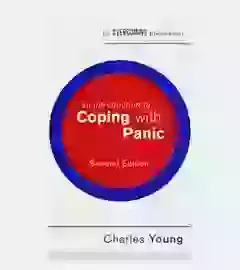Coping with anxiety and panic
One in four people suffer with a mental health condition and anxiety is one of the more common issues. The symptoms can range from heart palpitations, sweaty palms and dizziness, which can seriously affect your ability to live your everyday life. However, with the right support, coping with anxiety can become a realistic goal.
Anxiety, which can range from mild feelings of being nervous, on edge or frightened to sheer terror, is a normal – and essential – part of being human. Although the experience of anxiety is usually harmless, it isn't nice for a reason: to draw our attention to danger. It is for this adaptive reason that anxiety is not easily ignored. Anxiety also prepares the body to respond to the danger. This is known as the fight-or-flight response. So, when we get anxious, our bodies get ready to respond quickly and firmly in the face of a physical threat.
In the long-distant past humans had to deal with physical dangers all the time, so this response became, and still is, an inbuilt part of our bodily make-up. However, nowadays, many of the dangers we face are non-physical. For instance, we may experience anxiety when we have to speak in public, have relationship problems, or are worried about being able to pay the mortgage. The fight-or-flight response is not at all helpful for dealing with threats like these. Another problem is that we sometimes see harmless events as dangerous, and this can cause unhelpful anxiety. This is exactly what happens when you experience a panic attack. When you panic, you do so because you regard the symptoms of anxiety as dangerous.
Fortunately, it’s possible to overcome panic attacks: through understanding what happens when you panic and changing the thoughts and behaviour that make you have panic attacks, you’ll slowly become able to face the situations that have previously caused you to panic.
One of the most common symptoms of anxiety and panic is rapid breathing, or hyperventilation. Small changes to how quickly you breathe can upset the delicate balance between oxygen and carbon dioxide in the bloodstream. This can cause unpleasant symptoms, including:
- Tingling face, hands or limbs
- Muscle tremors or cramps
- Dizziness and visual problems
- Difficulty breathing
- Exhaustion and feelings of fatigue
- Chest and stomach discomfort
You can easily correct over-breathing by learning to breathe gently and evenly. Controlled breathing can help you prevent the uncomfortable symptoms of hyperventilating to manage your anxiety better. While it may not be the answer for everyone, you’ll only know if it works for you if you practise it for 2 or 3 minutes as often as you can (and at least 3 or 4 times a day). The better you are at controlling your breathing when you are relaxed, the better you will be at controlling your breathing when you are anxious.
CONTROLLED BREATHING EXERCISE
Either sit upright or lie down on your back. If possible, breathe through your nose in a gentle, steady rhythm. Your breathing should not be jerky and you should try not to gulp or gasp.
- Place one hand on your chest and one hand on your stomach.
- As you breathe in through your nose, allow your stomach to swell. This means that you’re using your lungs fully. Try to keep the movement in your upper chest to a minimum and keep the movement gentle. Imagine that you have four lungs: two in your chest and two in your stomach area. Imagine the ‘lungs’ in your stomach filling up with air.
- Slowly and evenly, breathe out through your nose. Now imagine the ‘lungs’ in your stomach area deflating.
- Repeat this to establish a gentle rhythm. You’re aiming to take 8 to 12 breaths a minute. This means that it should take around 5 to 7 seconds for each in-breath and out-breath cycle. But don’t worry too much about the timing – you’ll find a comfortable rhythm that’s right for you.
- Try to relax your mind too. Shut your eyes and concentrate on pleasant, peaceful thoughts. Feel the tensions ease in your body.




